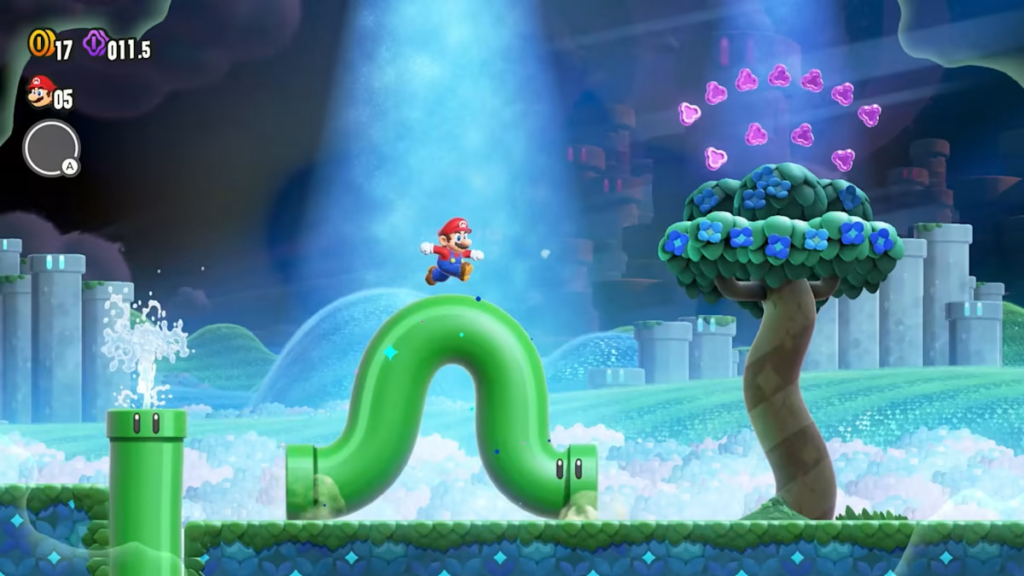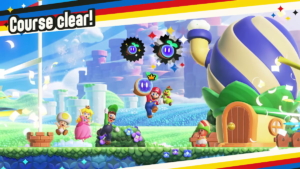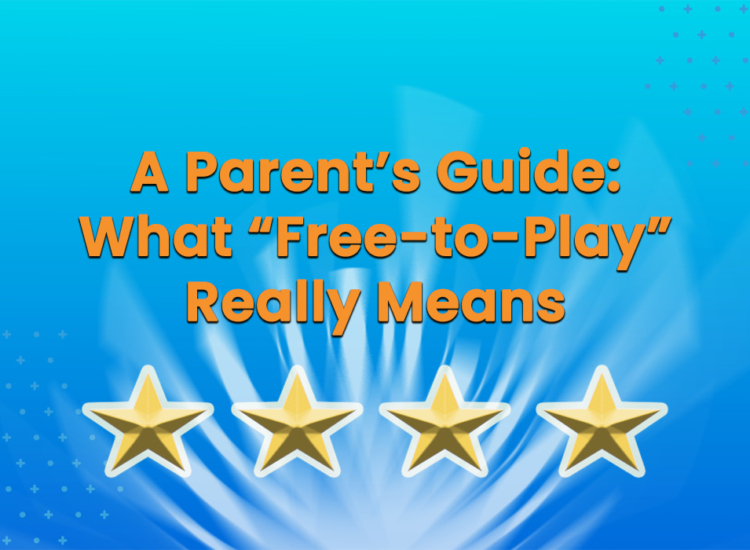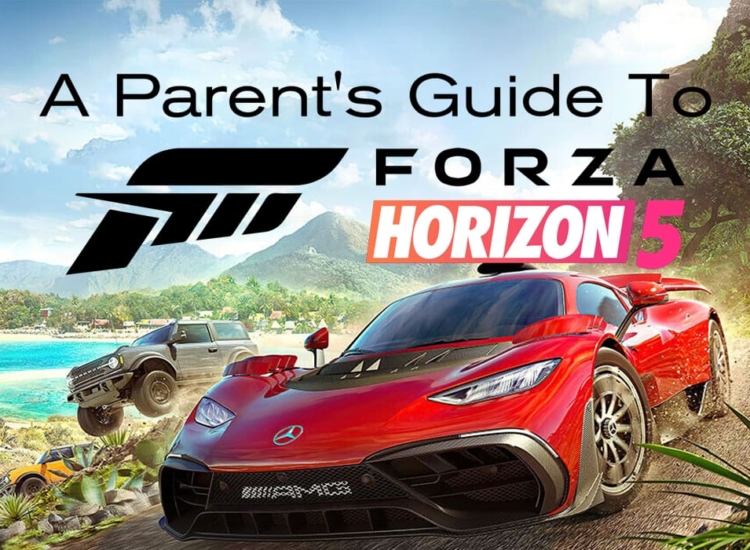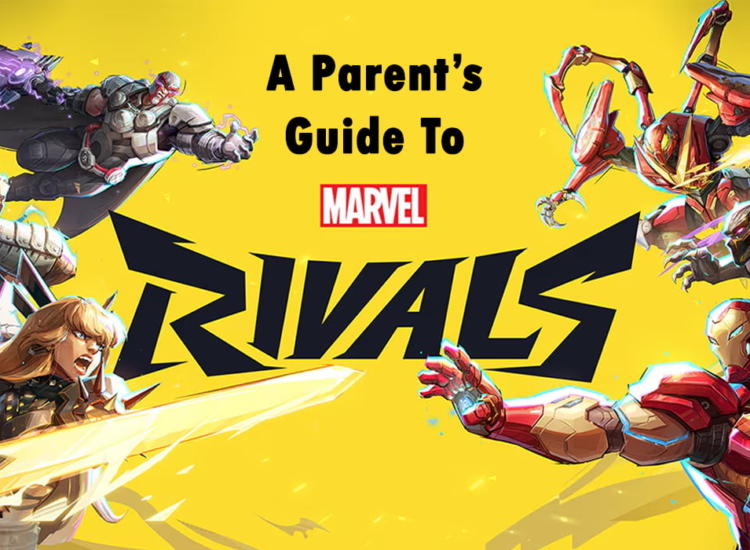What Parents Need to Know About Super Mario Bros. Wonder
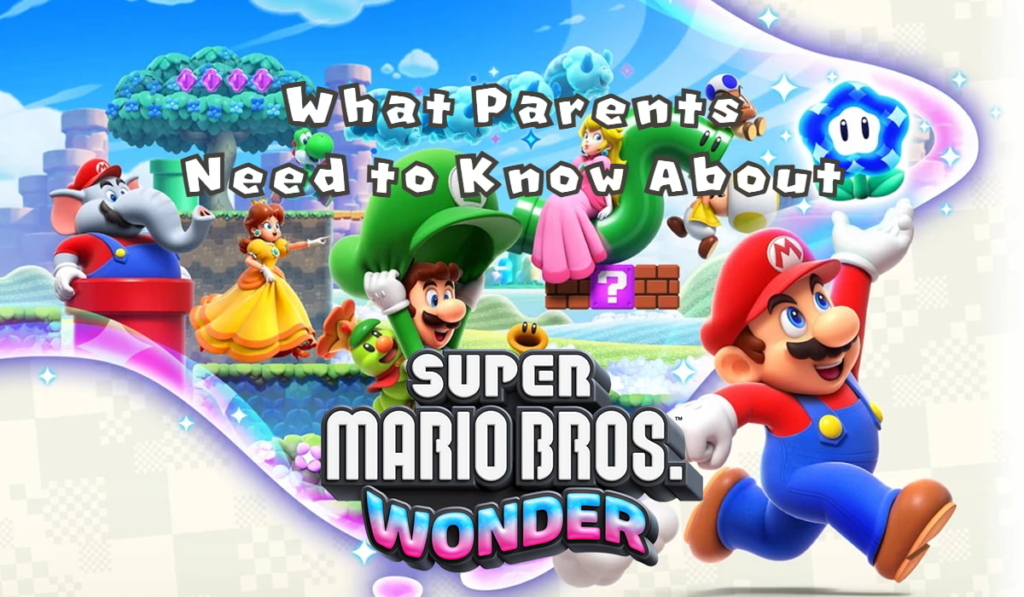
Mario and his crew return in a new adventure game in Super Mario Bros. Wonder. The legendary plumber is a household name, and your kids may be clamoring to spend some time jumping, stomping, and powering up to help save a new kingdom in need.
So, what’s new in this iteration of the long-running series? We’re here to tell you everything you need to know to decide if it’s appropriate for your family.
Is Super Mario Bros. Wonder Appropriate for Your Kids?
Super Mario Bros. Wonder is rated E for Everyone, with Content Descriptors for Mild Fantasy Violence and an Interactive Element for In-Game Purchases. This is a platforming game in which players control characters from the Mario universe as they try to stop the villain Bowser. Players traverse whimsical environments while jumping on enemies’ heads, throwing shells, and tossing small fireballs to knock them off-screen. Boss battles contain more involved combat against giant enemies that breathe fire and smash parts of the scenery.
As is the case with most Mario games, the content is cartoony and colorful, making it generally suitable for all ages.
Where Can You Play Super Mario Bros. Wonder and How Much Is It?
Super Mario Bros. Wonder is available for the Nintendo Switch and costs $59.99 both physically and digitally.
As mentioned, Super Mario Bros. Wonder also includes an Interactive Element for In-Game Purchases. This means that the game may include offers to purchase additional content.
What is Super Mario Bros. Wonder About?
Mario and his band of best friends are helping Prince Florian regain the pretty and magical Flower Kingdom from the Bowser’s nefarious influence. Players select a character to play from a roster of much-loved characters including Daisy, Luigi, Peach, and Toad. It’s the first traditional 2D Mario platforming game from Nintendo in more than a decade.
How Does Super Mario Bros. Wonder Play?
If you’ve ever played a classic 2D Mario side-scrolling adventure like Super Mario Bros. then you’ll know what to expect. Players steer Mario and his friends through several colorful, increasingly challenging worlds of platforms, obstacles, power-ups. As you jump, stop, and “wah-hoo” your way through levels, you and your family will battle cartoonish enemies, including familiar foes like Goombas and new baddies like Maw-Maws – funny, walking mouths that eat anything in their path.
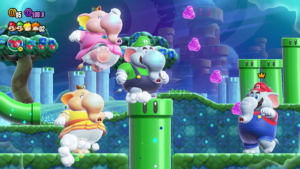
Collectible power-ups and badges also return, giving your character special abilities. In addition to mainstays like mushrooms and fire flowers, Mario and some other characters can turn themselves into elephants, making use of extra size and strength as well as a useful trunk that can swat away enemies and spray water.
Players can also turn themselves into bubble-blowing bosses, capturing enemies at a distance, or using the bubbles as temporary platforms to access hard-to-reach areas. There are sure to be other power-up surprises throughout the game, too.
Can I Play With Other People?
Super Mario Bros. Wonder can be enjoyed as a single-player game or together with up to four players on the same Nintendo Switch, making the game fun for the whole family to play together.
While Super Mario Bros. Wonder does include some online features, it is not traditional co-operative play. Instead, players will be able to see which levels their friends have beaten and enter races to see if they can complete the level faster. Players can also leave “standees” (which look like little wooden cutouts of characters) in levels. Should their friend be playing the same level on their own Nintendo Switch, they will see that standee from your family and receive a bonus from it!
Younger children can play as Yoshi or Nabbit, who don’t take damage, making it easier to complete levels and explore the world and overcome some of the more challenging platforming sections. If a player loses a life, another player can save them and bring them back into the game, adding another layer of accessibility for younger players or players that are still learning.
Managing Your Kids’ Games
Modern game consoles, including Nintendo Switch, feature a variety of parental controls that allow you to manage which games your kids can play, when and for how long, whether they can share content with other online, and whether they can spend money on new games or in-game purchases. You can find step-by-step guides on how to set parental controls at ParentalTools.org.
Super Mario Bros. Wonder can be enjoyed as a single-player game or together with up to four players
Additional Tips for Parents
While parental controls offer parents many great choices, there are always more steps you can take to ensure that your kids have appropriate video game experiences.
We always say that the best first step is to call a family meeting and establish some household rules around video game play. By discussing video game play in your home, while acknowledging the positives, you’re setting a precedent for an open-ended, judgment-free conversation about video games.
You’re also letting your kids know that, while you respect their love of playing games, there are parameters that the whole family needs to respect (including you!). Just remember to back up your household rules with parental controls if/when you need to!
It is always a good idea to check the ESRB ratings pages for the games your kids play, and to do your own research, by viewing game trailers and independent game reviews.
Visit ESRB’s Family Gaming Guide for more information on household rules, parental controls, online safety tips, and more.

